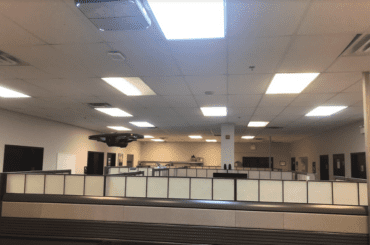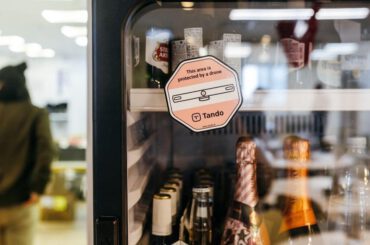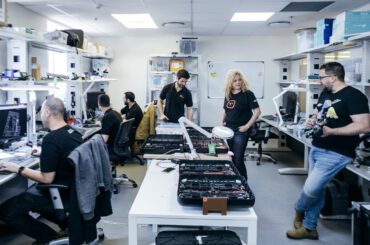The security guard’s duty is as old as civilization: protecting facilities, protecting the people in those facilities, and safeguarding the property found there. But today’s ever-changing business, health, social and economic environments make filling positions harder than ever. As Steve Jones, CEO of the country’s largest security firm, Allied Universal, explained to the Los Angeles Business Journal, “I’ve been doing this for 25 years, and I’ve never seen a labor market like this where you have high unemployment, but you have millions of job openings and no employees to fill it.” Another company, ESI Security Services, laments that it would get up to a hundred applicants a week. Now they are lucky to get 20 a month.
In short, facility managers can’t hire enough guards. Security companies are turning down clients because they don’t have the human resources. What’s causing this disturbing trend, and how temporary is it?
COVID created inconsistency
Three years of unpredictable, erratic activity in nearly all business sectors weighed painfully on the shoulders of the average hourly-paid security guard. As the epidemic rolled on month after month, businesses closed, then opened. Rules changed weekly. A building would open, but only certain areas functioned. Many guards — whether directly employed by the facility owner or working through a third-party security company — were sent home with little or no compensation, unclear on how long this stint of unemployment would last. And for those guards back on the job, the danger of viral exposure became a daily worry in a position where they were usually surrounded by people. Even the shift from a passive patrol-oriented job to one involving enforcing mask laws was, for most, unpleasant.
When the malls, theaters, and office buildings began to open up again, they did so gradually, and while they couldn’t allow for the lack of a security guard, they employed only a fraction of the guards required. With so many work-at-home positions becoming the norm, much of the world has not returned to previous volumes of in-person activity, requiring less security. Many at the lowest rungs of the security workforce ladder saw the epidemic as a wake-up call: they needed to find more stable work… or simply enjoyed the luxury of living off stimulus payments or unemployment. They are now lost to the industry.
Cybersecurity takes the front seat
With online hacking and fraud at all-time highs, many companies are shifting a more significant part of their security budgets to cybersecurity tools and teams. While there is certainly logic to this trend, they often do not realize that many data security breaches begin initially from a human intrusion; the hacker waits to find a “bad” security guard, plants a thumb drive to spread a virus, gains access to wreak havoc on the network, or accumulates data. When companies pay for their critical new technology solutions with money previously allocated to human guards, it means fewer perks, tighter budgets, raises, and extra vacation time becoming increasingly rare. In an industry often paying minimum wage with few benefits to begin with, the appeal is fading. If security guards could possibly feel less valued, hi-tech threats and the highly-paid digital defenders have done so.
Alternative options abound
The younger generations — those who traditionally saw guard positions as a quick, simple way to earn some money in their early years — are becoming increasingly concerned about finding positions (even entry-level) where they have job satisfaction and a sense of making a real contribution to the world. They see technology all over, making life more dynamic, entertaining, and flexible, and they aren’t as keen on spending the day walking a beat. With so many work-from-home opportunities (i.e., the gig economy on sites like Fiverr, reselling through Amazon, etc.,) being created and expanding with the evolution of technology, the appeal of pursuing a more flexible, higher-paying career path is ever more appealing. These positions also offer (unlike a proper security guard role) flexible hours and a better resume list item. Online training has accelerated the speed at which a new recruit can get up and running in even a somewhat technical job, earning a corresponding salary increase.
With all these factors creating the perfect storm, the ability to attain — and retain — a stable security team is getting tougher and more challenging. And let’s remember that basic economics apply even to minimum wage jobs: With demand rising, salaries and benefits are going to rise with it.
Well, a company needs security guards…right?
The solution for many facility managers and security guard management companies has been to turn to automated systems, using robotic or AI-driven, drone-based platforms to handle the repetitive, mind-numbing routine patrols. Our drones, for instance, fly through a facility in a way a static camera certainly can’t— often as part of a fleet providing more comprehensive coverage than a couple of humans. Autonomous drones can be armed with sensors for low-light areas, moisture, and heat (way beyond a human’s perception), can fly high above ground level, and record everything they see without missing a detail. An anomaly is instantly reported to the (now more modestly staffed) security team for quick decision-making and response.
But that’s not all. Unlike humans, drones are as attentive after “hour eight” as they were at “minute eight.” They don’t call in sick. They also require no training (a time-consuming, repeated task in the human version of this high-turnover position) and don’t need to take breaks to eat, visit the restroom, or grab coffee. Even when our drones dock periodically to recharge in the ceiling-mounted Tile stations, their 360-degree cameras continue to watch and record. Security guard schedules get an upgrade from a series of 8-hour shifts by three different people to 24/7 handled by even a single drone at a fraction of the cost.
In short, human security guards will get much tougher to recruit — definitely for the short-term and perhaps for the long-term — but our industry is lucky enough to have a viable alternative that’s more effective and less expensive.



